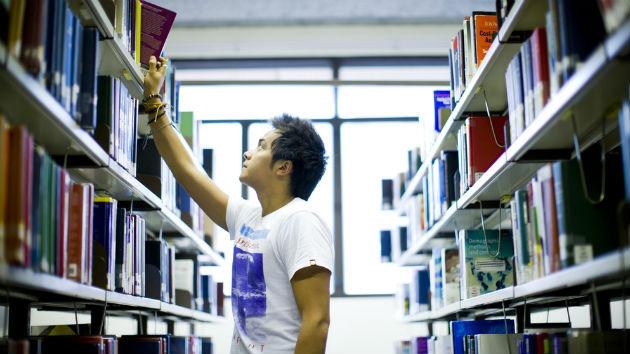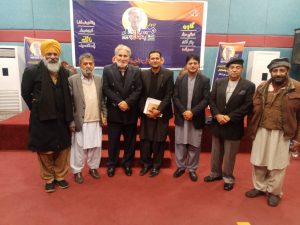ISLAMABAD (APP) – China is fast attracting students from Pakistan, especially those from the middle class background, discouraged by the exorbitant expenditures of overseas education in Europe or North America. Medical students make up the bulk of Pakistanis currently studying in China.
Even greater number of Pakistani students will be enabled to head to China for higher education as a result of an expected agreement in the wake of upcoming visit of Chinese President Xi Jinping to Pakistan, starting next week.
China is still behind UK (10,000) and USA (5,000) as the ultimate destination for Pakistani students but the number of China-bound students is expected to rapidly increase given China’s position as the world’s second biggest economy, rising standards of its higher education and its close relations with Pakistan.
However, the emergence of quality educational institutions within the country ushered a trend among the Pakistani students in the recent years to seek higher studies at home.
According to Shazia Khan, “In the last 10 years, there has been an increase in the number of quality higher education institutes in Pakistan. This encourages many students to study in the country rather applying abroad”. You stay close to home and get equally good education in far less budget, she added.
Nevertheless, China attracts a large number of students from Pakistan, with 2006 estimates putting their number well over 1,000.
In Xinjian alone, there are over 500 Pakistanis in universities and in total, there are over 5,000 Pakistani medical students studying in China as of September 2012.
Most Pakistani students desirous of medical or other education in China are selected by the Higher Education Commmission (HEC). A good number of those students learn Mandarin (Chinese language) at the National University of Modern Languages (NUML) in Islamabad or at some other institution.
For decades, a foreign education was the preserve of the richest who could afford the expense of sending their offspring to Oxford or Harvard. Now, the ambitious progeny of the middle-class families of Pakistan take admissions in Mandarin Chinese at the NUML in Islamabad.
Some of them hope to get a job with a Chinese company in Pakistan. Others will go on to further studies in China, which offers around 500 scholarships a year and more economical fees.
A course in China costs a few thousand dollars a year, compared with the tens of thousands of dollars US and British universities charge. What is more, some Pakistanis say their great neighbour makes them feel more welcome.
“Nowadays as Pakistanis, you may not be as welcomed in all other countries as we were a few years ago,” says 18-year-old Ali Rafi, who applied for admission to study economics at Shangdon University after visiting last summer.
“But when we went to China, there was one major difference that we felt at home, the interactions with people were really, really good. We were always welcomed, honoured and everyone was really pleased when they learnt we were Pakistanis.”
Moreover, China had also increased scholarship stipend money for international students from Sept 1, 2014. Now, undergraduates will receive 66,200 yuan ($10,660) per year, those pursuing master’s degree will get 79,200 yuan and PhD students will receive 99,800 yuan.
The allowance will cover tuition, boarding fees, living expenses, travel costs and medical insurance. An additional subsidy of 5,000 yuan will be granted to students attending programs taught in English.
Rafi studies at City School, one of the private schools in Islamabad that has started to offer Mandarin-Chinese lessons to children as young as 12, who sing in Mandarin under the watchful eye of their teacher, Zhang Haiwei.
If everything goes well, the classes will be rolled out across the school’s other 200 branches in Pakistan. And other private schools are doing the same.
Pakistanis complain about the difficulty of getting western visas and of the suspicion their nationality can arouse particularly in Britain and the United States.
The British government says that overall, 20 per cent fewer student visas were issued in 2012, compared to the previous year.













